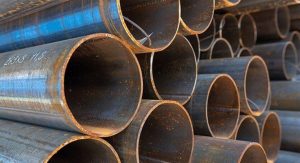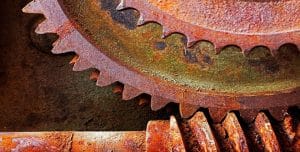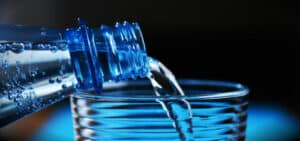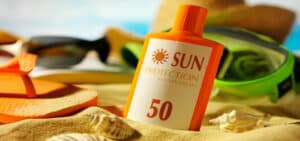Corrosion refers to the gradual degradation of a substance by reaction with its environment. Many engineering materials, including metals, ceramics, polymers, etc., are always at risk of corrosion. You must have seen rusting metals that are exposed to water or air many times, this is one of the most common examples of corrosion in metals. Corrosion in metals is usually an electrochemical process, meaning that corrosion of metals generally does not occur due to the chemical reaction of the metal with its environment, but is often the result of a pair of electrochemical reactions and electron exchange.
How to Prevent Corrosion:
Corrosion control is important in three aspects: safety, economy, and reduction of natural resources. For example, suppose a pipe in a refinery breaks down due to corrosion and needs to be replaced. In this case, the cost of replacing the pipe may not seem like much at first glance, but keep in mind that closing the production line every hour will cost the center thousands of times the cost of replacing the pipe. For this reason, economic considerations have always been one of the most important human motivations for the spread of corrosion science. In addition to the economic aspects, the sudden destruction of structures due to various and different types of corrosion can endanger the lives of thousands of people. The collapse of large bridges throughout history due to corrosion has repeatedly caused people to fall and die. From a corrosion point of view, care must be taken to prevent toxic heavy metal contaminants from entering food and medicine, especially when high-pressure reagents are used to produce food and medicine. The internal material of reactors must be selected from materials that don’t corrode.
What are the Methods to Prevent Corrosion?
- Cathodic protection
- Anodic protection
- Slow down material
- Protective Coating
- Proper design of the device
- Choosing the right materials
Cathodic Protection:
Cathodic protection is the reduction or cessation of corrosion by the application of a one-way external current or the connection of a sacrificial anode to the metal in question so that the metal acts as a cathode. Cathodic protection has been widely used. Today, these types of chemicals are used to protect internal and external surfaces pipelines and underground installations, underground cables, duct valves, heat exchangers, ships and submarines, Water tanks, piers, ports, offshore facilities, etc.
Anodic Protection:
This method, unlike the cathodic protection method, tries to corrode the metal to an acceptable level. In fact, this initial corrosion is necessary for the metal protects from further corrosion. This continues until a protective shell forms on the metal surface. This shell is thin, sticky, and dense and prevents further corrosion. This method is used to reduce the corrosion of ferrous active metals in highly corrosive environments. Including protecting steels, austenitic stainless steels, and other alloys in environments such as sulfuric acid, phosphoric acid, sodium hydroxide, and Corrosive salts such as aluminum sulfate and ammonium nitrate.
Anodic inhibitors include the following:
- Chromate;
- Nitrate;
- Orthophosphates;
- Vapor phase inhibitors: Materials that evaporate due to high vapor pressure are placed on the metal surface and protect the metal against corrosion. Vapor phase inhibitors include morpholine or hydrazine.
- Combined inhibitors: These types of inhibitors protect the metal from corrosion by creating a thin film on the metal surface. As a result, they change the corrosion potential of the inhibited metal, either in the cathodic or anodic direction, respectively. Or significantly leave the metal corrosion potential more or less unchanged.
Slow Down Material:
Slowers are chemicals that, when added in very small amounts in corrosive environments, significantly reduce (or in some cases) the amount of corrosion. The effect of these materials is due to the slowing down of anodic or cathodic reactions or as a result of the formation of a protective surface film that increases the electrolyte resistance. In general, there are two types of slowers:
- Slowers that have oxidizing properties.
- Slowers that use ambient oxygen to create a protective film on the metal.
Slowers have a wide range of applications, including in cooling water systems (in industrial units and machines), piping, acid washing, and descaling operations, and nonaqueous environments (such as devices and operating units of refineries and other chemical industries petroleum fuels oils, etc.), gas or steam environments, packaging, and maintenance of equipment and parts.
Protective Coating:
In general, coatings are used to create a barrier between the corrosive environment (such as oxygen in the environment air) and the surface of the desired part. Coatings have four main functions, depending on their role mechanism.
Another goal of coating is as follows:
- Avoid contact with the environment with the desired surface, such as watering.
- Limit the contact of the environment with the desired surface, such as organic coatings.
- Diffuse materials and create protective or slowing conditions from destructive attacks on the target object, such as chromate liners.
- Generate a protective electric current, such as galvanizing.
In this way, the coatings are divided into 3 categories according to their material:
- Metal coatings;
- Organic coatings;
- inorganic coatings.
Choosing the Right Materials:
Due to the rapid development of industries and their expansion in various fields, especially in the last century, the use of various industrial materials and materials has become very widespread, so that today in order to manufacture parts, tools, and equipment needed in the Automotive industries, pipelines, bridge construction, power plants, mines, spaceships, etc., use a variety of metals and alloys, natural materials, wood, concrete and ceramics, synthetic materials and kinetics, and composites. The selection of each of them is done according to the relevant properties and characteristics and their performance against environmental factors. In general, each substance may be more suitable than other substances only in a specific application. In total, out of 116 known elements, about 80 are metals, each of which has its own mechanical, chemical, and physical properties, and also their amount, speed, and corrosion behavior of them in certain environments and conditions are different from each other.
What are the types of corrosion inhibitors?
Corrosion inhibitors are widely used to suppress or at least reduce the corrosion of metals in various fields. Which extends from industrial sectors to building materials to cultural heritage level treatments. There are various chemicals such as corrosion inhibitors such as polyphosphates, nitrates, zinc metal salts, benzotriazole, mercapto-benzothiazole, amines, silicates and chromates and etc.

Corrosion inhibitors are classified into two categories based on the way they protect metals against corrosion:
Cathodic Inhibitors: These types of inhibitors are compounds that inhibit the reduction of hydrogen ions in two ways. Cathodic inhibitors either reduce their cathodic reaction rate or prevent the release of abrasive elements onto the metal surface by depositing them in the cathodic range.
Anodic inhibitors: The mechanism of action of these inhibitors is associated with increased anodic polarization. Anodic inhibitors will be effective if enough is added to the system. If their concentration is less than the critical concentration, they will reduce the effective level, and eventually lead to intensification of local corrosion.








4 Responses
How many types of corrosion are there?
Uniform Corrosion
Localized Corrosion
Galvanic Corrosion
Environmental Cracking
Flow-Assisted and Intergranular Corrosion
Fretting Corrosion
High-Temperature Corrosion
Soil Corrosion
What are effects of corrosion?
Some of the effects of corrosion include a significant deterioration of natural and historic monuments as well as an increase in the risk of catastrophic equipment failures.